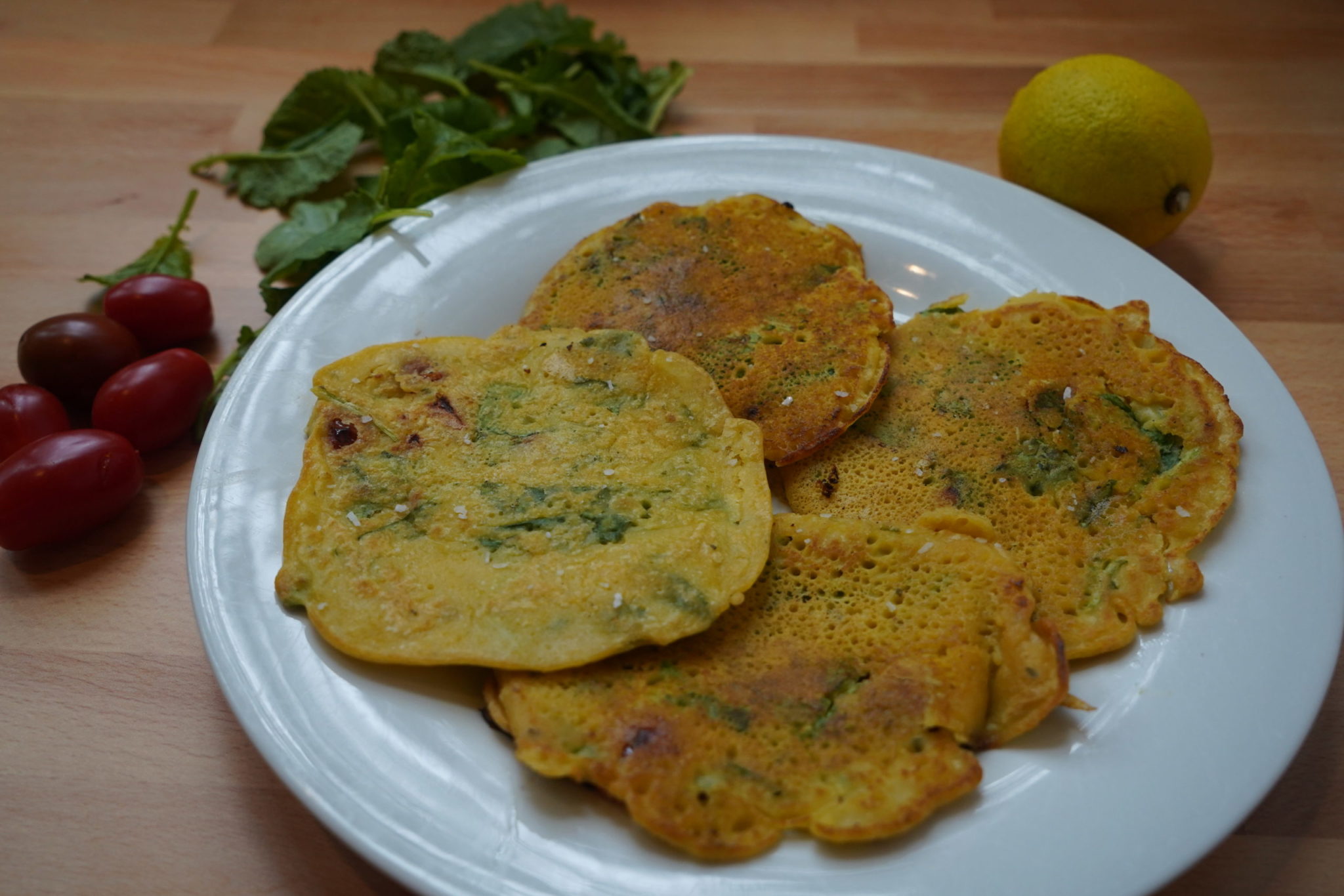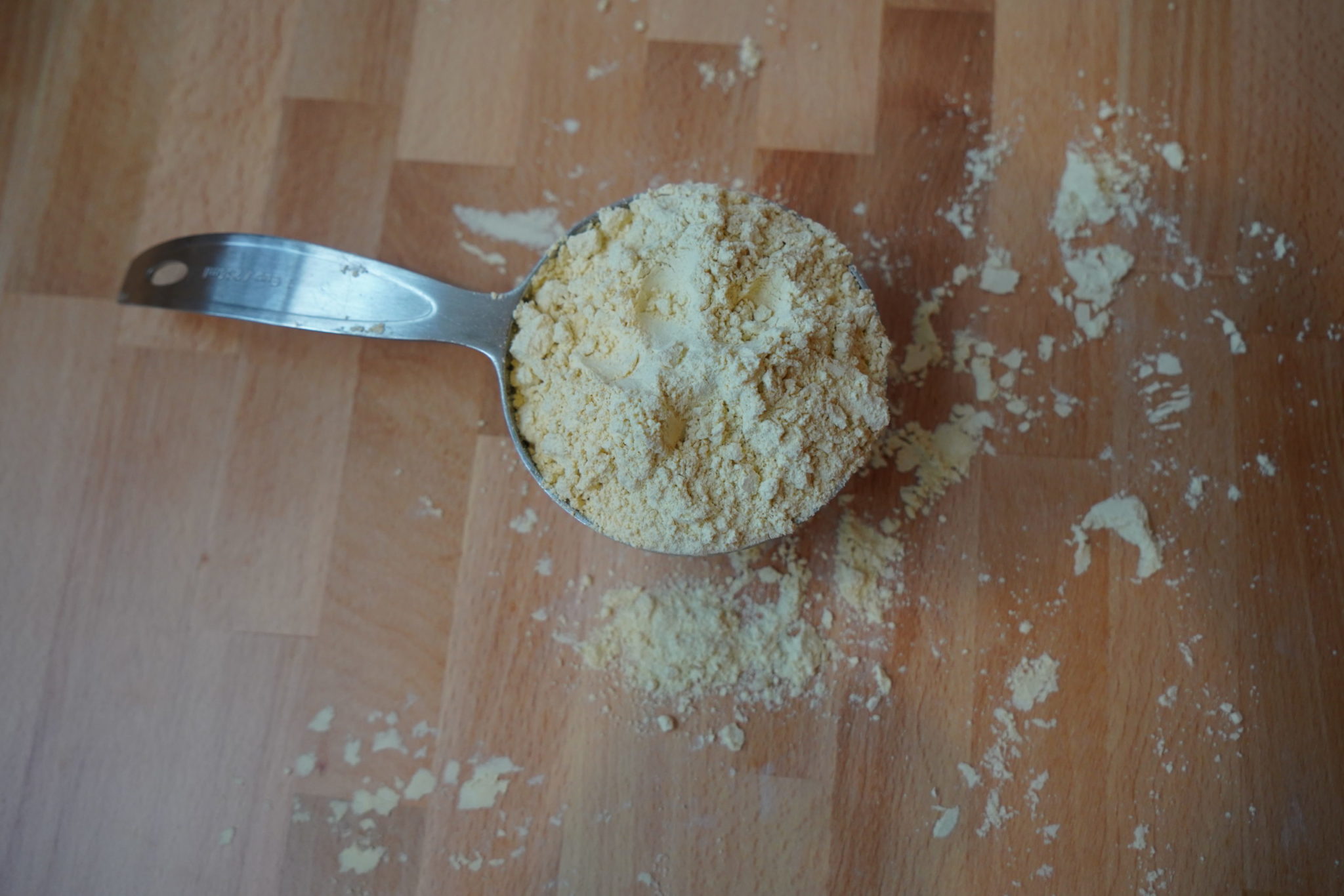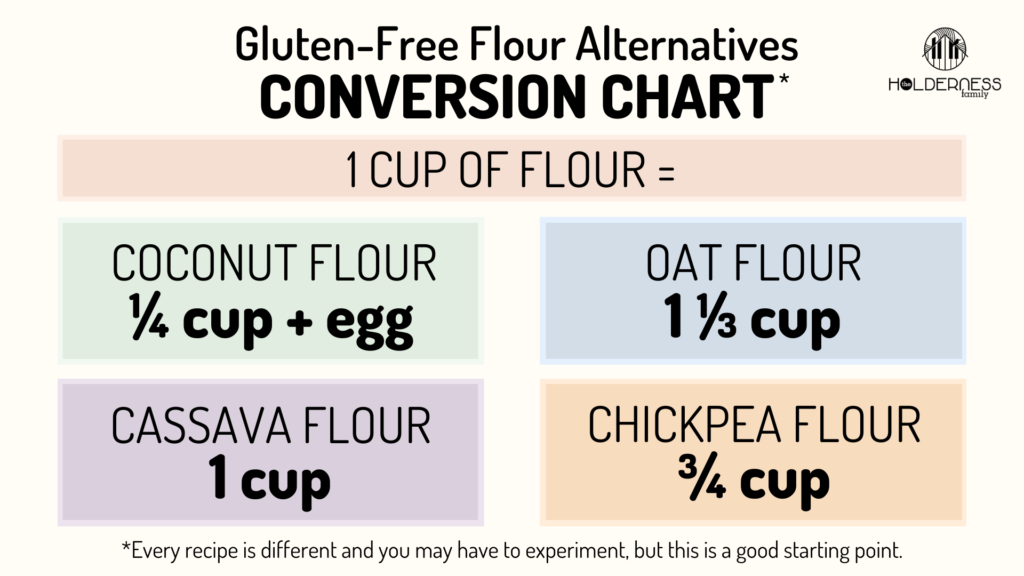Here’s the deal – gluten is DEEE-licious. I’ve never met a beautiful loaf of bread or pizza I didn’t love. That said, they don’t always love me back. Lately I’ve realized a lot of friends and family are in the same boat and are trying to do more gluten free eating to feel better. (But I rarely turn down pizza. It’s called balance).
While there are a lot of really good all-purpose gluten free flours on the market (I love Trader Joe’s), I have learned over the years that there are tons of other useful options. I really like single ingredient flours because you can control what goes in your food and eliminate anything that doesn’t work for your body.
Here are a few alternative flours I’ve learned to love and what I use them for most.
- Coconut flour – Even if you’re not a person that loves the flavor of coconut, this flour is a kick a** thickener and binder. Be wary of using it as a sub for regular flour. It’s high in fiber and protein but very dry. Typically, you’ll use ¼ cup of coconut flour plus an egg for every cup of traditional flour, but you should search for recipes specifically formulated for coconut flour before diving in.
That being said, it’s a great binder to replace breadcrumbs in things like meatballs. The flavor of whatever protein you’re using, plus the herbs and spices in most meatball recipes, make the coconut flour virtually undetectable.
- Oat flour – I like oat flour because it’s not a strong flavor. It also has a bit more protein than most flours so it creates a heartiness and nutty flavor which I find great for making muffins. When using this as a baking replacement, keep in mind you’ll measure by weight not by volume. Typically, you’ll want 1 ⅓ cup of oat flour for every 1 cup of regular flour.
And here’s a hot tip if oat flour is hard to find or expensive in your area – if you have a great blender, just buy regular old whole grain oats and blend until they are a fine texture. Use a sieve to shake out any large chunks. Done and done, oat flour you made yourself. You fancy.
- Cassava flour – This stuff isn’t cheap, but it lasts. It’s made from the yuca root (pronounced yoo-kah), which is native to South America and is also just tasty to buy and roast as a potato alternative. The flour bakes incredibly well and in my opinion, oftentimes closest to a traditional wheat flour. Cassava is nearly flavorless so it can take on whatever flavor your recipe calls for. People say you can use it as a 1:1 substitute for all-purpose flour but I have only used it in recipes designed for cassava. I’ve made this garlic rosemary flatbread and it is delicious and even rises a bit which is traditionally a challenge with gluten free flours.
- Tapioca flour – I find this one to be pretty interchangeable with Arrowroot flour as a great binder and thickener for things like soups. I don’t love it as a 1:1 flour substitute but I find that in the right recipes it can rise which just makes me happy. My family loves these plantain buns and while mine have never turned out quite as beautiful as the ones in the photos (shocker!), there’s a nice chewiness and density to them.
- Garbanzo bean/Chickpea flour – This one was the last addition to my gluten free flour rotations. You can use ¾ cup of Chickpea flour to substitute 1 cup of regular white flour.
My favorite recipe is a savory breakfast “pancake.”
There’s more protein in garbanzo or chickpea flour given that it comes from a bean. I love that this recipe provides a simple base that can be completely customized to your taste buds or whatever in your fridge needs to be used!

Savory Garbanzo Bean Pancake, serves 4
Ingredients:
- 1 cup Garbanzo Bean Flour
- 1 cup water
- 4 tsp olive oil
- Zest of one lemon, pending taste preference
- 1 tsp salt
- 1.5 tsp garlic powder
- 1.5 tsp parsley flakes
- 1 cup thinly sliced kale (I use Lacinato or baby kale because they are flatter and easier to cut)
- 1/2 cup cherry tomatoes, quartered
- Avocado oil for pan frying
Instructions:
- Mix flour, water and olive oil together in medium sized bowl
- Add spices, lemon zest and kale to batter and stir to combine
- Add a bit of avocado oil to a 10 inch pan over medium heat – or skip this step if your nonstick pan works really well without it
- using a ½ cup measuring cup, scoop and pour batter into your hot pan
- Sprinkle the cherry tomatoes (if using) directly on top of the batter in the pan
- Cook approximately 3 minutes or until bottom begins to crisp and the batter starts to cook through
- Flip pancake, cook another 3 minutes and serve
NOTES:
*This batter is sturdy and simple, you can easily double or triple if you’re trying to feed more people. Also, it’s real good, so don’t take the “serves four” as gospel. If you want to eat all of it, I say go for it. It can be a bit gooey in the middle, so if that’s not your jam, thin the pancake out with a spatula once you pour it into the pan.
**The spices and fillings really are customizable based on your preferences. If you like something a bit more mild, take the spices down to ½ tsp each. If you wanted to add some more protein, crumble a cooked piece of bacon into the batter and reduce the salt down to ½ tsp. I also think crumbling goat cheese on top right out of the pan is dreamy.
There are plenty of other gluten free flour options than the ones included here. I also keep arrowroot flour, brown rice flour, almond flour and potato starch in the pantry pretty much at all times. What are your favorites that I missed?
Note: Some of the items in this blog include Amazon Affiliate and other links which earn a small commission.





